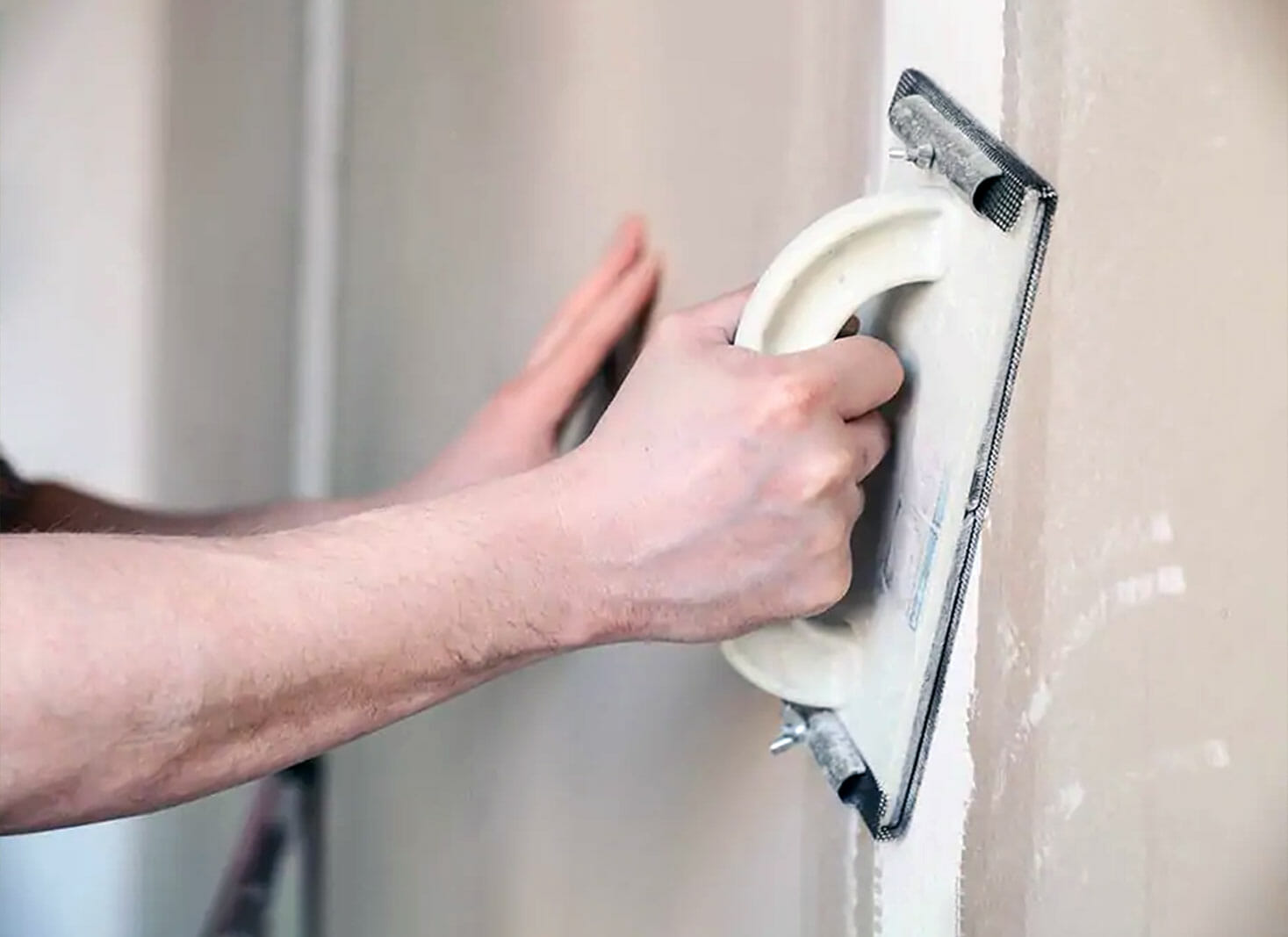
Selecting the appropriate sandpaper grit for sanding drywall is essential for obtaining a flawless and even finish. Nonetheless, the extensive selection of grit choices can render this decision difficult.
The best grit sandpaper for drywall is between 100 and 150 grit. Sandpaper with a grit of 220 or above may not effectively sand rough areas, while coarse sandpaper with a grit lower than 100 may leave visible scratches.
It’s essential to choose sandpaper that is appropriate for the specific task at hand and to use it correctly to avoid damaging the drywall.
Understanding sandpaper and grit
When it comes to sanding drywall, choosing the right sandpaper with the appropriate grit size is crucial. Sandpaper is an abrasive material that comes in different types and grit sizes.
The type of sandpaper and the grit size you choose will depend on the task at hand.
Different types of sandpaper
There are three main types of sandpaper: garnet paper, aluminum-oxide sandpaper, and silicon-carbide sandpaper.
Garnet paper is a natural abrasive made from garnet minerals, while aluminum-oxide and silicon-carbide sandpapers are synthetic abrasives.
Garnet paper is ideal for sanding wood, while aluminum-oxide sandpaper is versatile and can be used for sanding metal, wood, and plastic. Silicon-carbide sandpaper is best for sanding finishes and plastics.
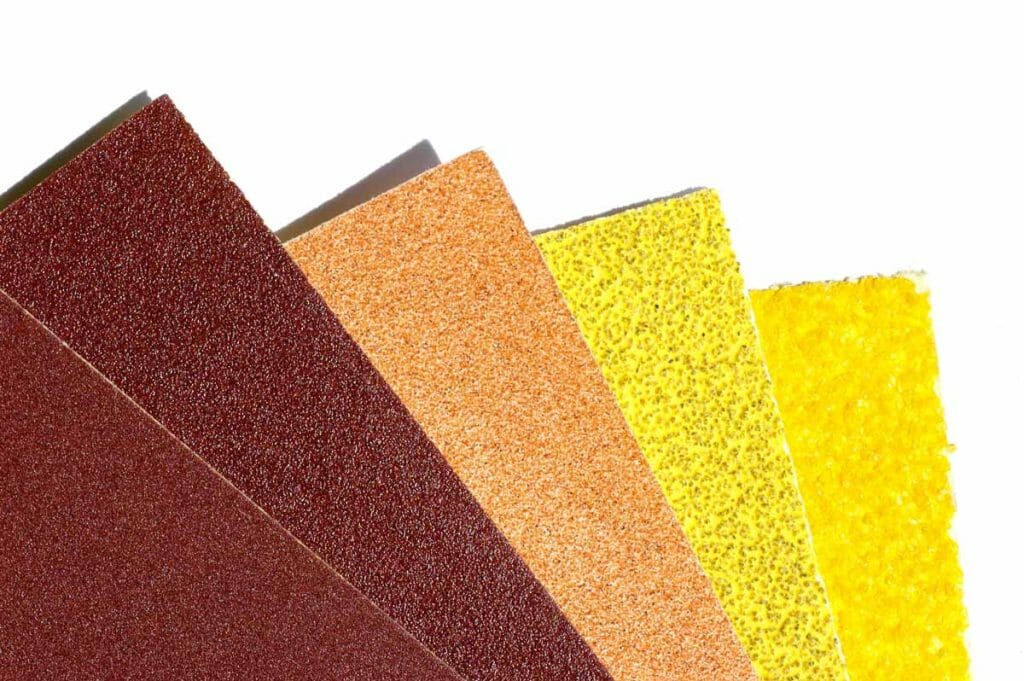
Understanding grit size
Grit measures the coarseness of the sandpaper and is determined by the size of abrasive particles on the sandpaper’s surface. The higher the grit number, the smaller the abrasive particles and the finer the grit.
The lower the grit number, the larger the abrasive particles and the coarser the grit.
Grit size ranges from extra-fine to coarse. Extra-fine grits range from 240 to 1200, fine grits range from 120 to 220, medium grits range from 60 to 100, and coarse grits range from 40 to 50.
When sanding drywall, most professionals recommend using medium to fine grit sandpaper.
Medium grit sandpaper, such as 100 or 120 grit, is ideal for sanding down rough areas or dried compounds. Fine grit sandpaper, such as 150 grit, is best for smoothing the surface further.
Choosing the right grit for drywall
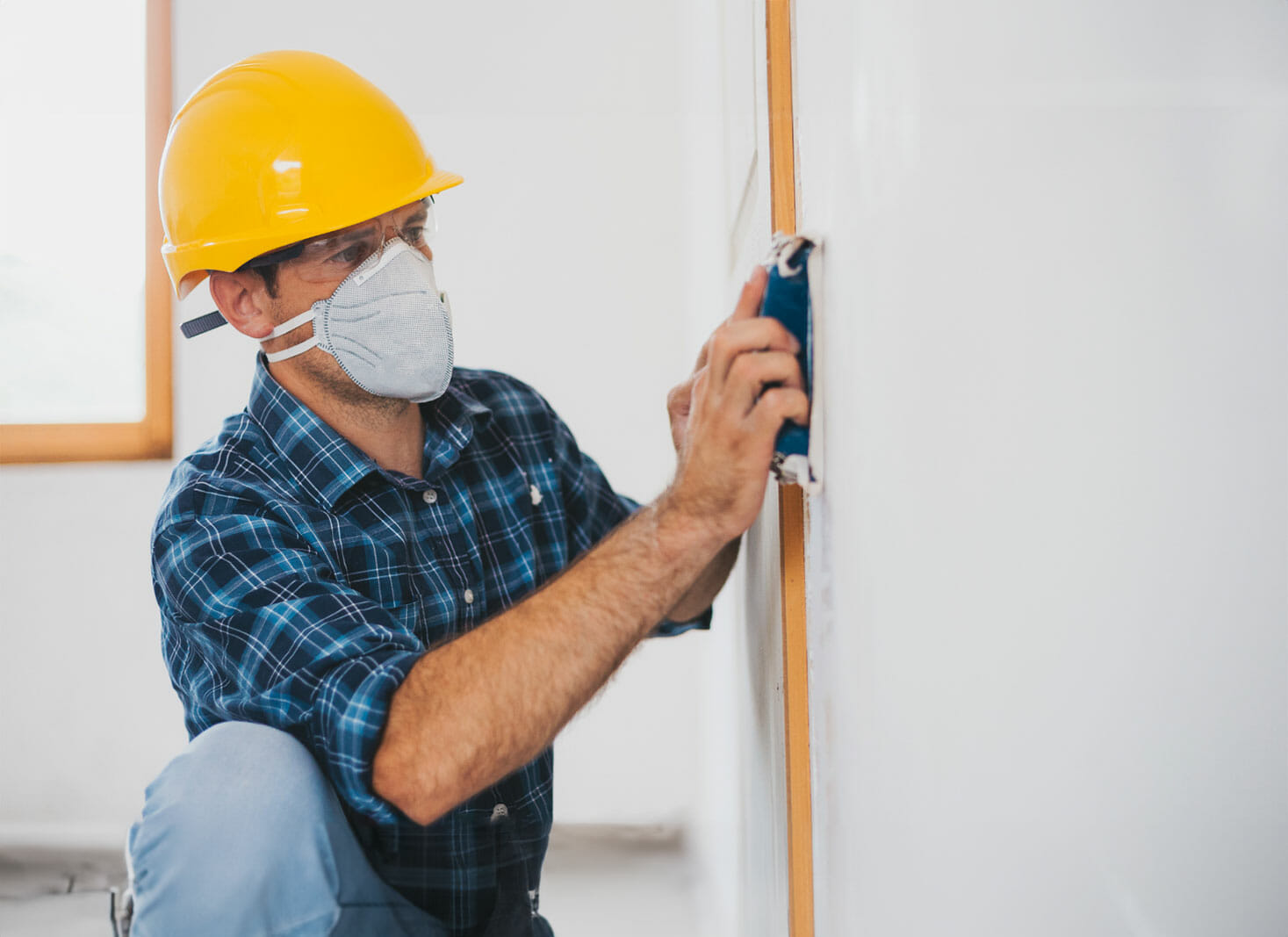
When it comes to sanding drywall, choosing the right grit is crucial for achieving a smooth finish. Here are some things to consider when selecting the appropriate grit for your drywall project.
Grit numbers for drywall
Grit numbers refer to the coarseness or fineness of sandpaper. The lower the number, the coarser the sandpaper, and the higher the number, the finer the sandpaper.
For drywall sanding, the most commonly used grits are between 100 and 220.
Choosing between coarse, medium, and fine
Coarse sandpaper
Coarse sandpaper, with grits between 40 and 80, is typically used for removing heavy texture or smoothing out rough patches on drywall.
Medium sandpaper
Medium sandpaper, with grits between 100 and 150, is ideal for smoothing out joint compound and removing minor imperfections.
Fine sandpaper
Fine sandpaper, with grits between 180 and 220, is used for final sanding to achieve a smooth finish.
Choosing the right sandpaper
When choosing between coarse, medium, and fine sandpaper, it’s important to consider the condition of the drywall. If the drywall has heavy texture or rough patches, start with a coarse grit and work your way up to a finer grit.
If the drywall has minor imperfections, start with a medium grit and move on to a fine grit for final sanding.
It’s also important to consider the type of sandpaper. Aluminum-oxide sandpaper is a popular choice for drywall sanding because it lasts longer than other types of sandpaper.
Garnet sandpaper is another option, but it tends to wear down quickly. Silicon-carbide sandpaper can be used for wet or dry sanding, but it’s not as durable as aluminum-oxide sandpaper.
Sanding drywall: a step-by-step guide
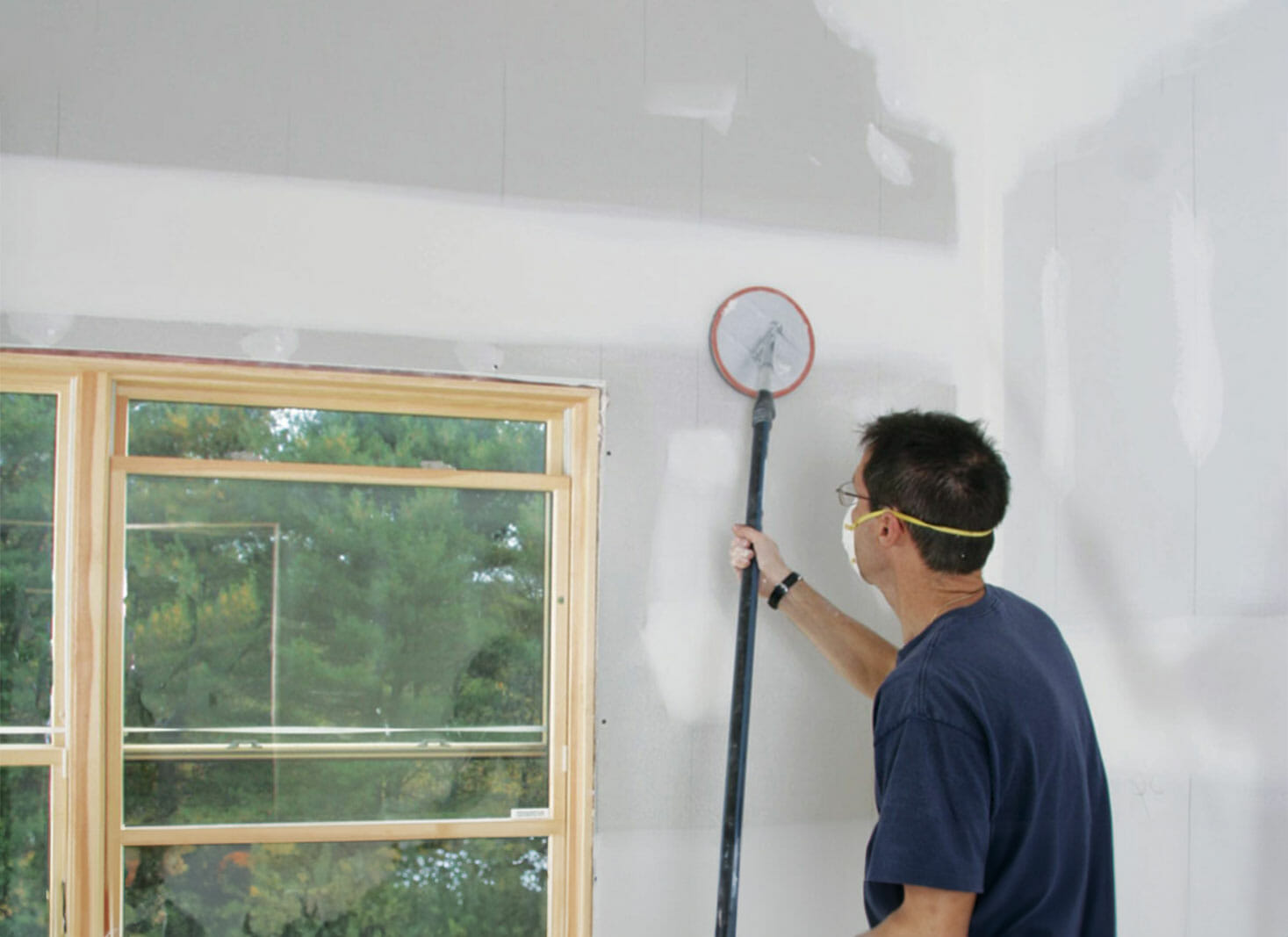
Preparation
Before sanding drywall, it is important to prepare the surface properly. Begin by removing any excess joint compound or mud with a putty knife.
Then, use a hand sander or pole sander with sanding screens to smooth out any rough areas or scratches. Make sure to wear a dust mask to prevent inhalation of drywall dust.
Sanding
When sanding drywall, start with a fine sandpaper such as 120-grit or 150-grit. Coarse-grit paper or sanding screens can leave undesirable sanding marks on the surface.
Use even pressure and move in a circular motion or a push-pull motion to feather the transition edge of the finished corner seam. For inside corners, use a sanding sponge to achieve a well-defined edge.
Wet sanding can also be used to reduce dust, but make sure to keep the surface wet and avoid over-sanding.
Post-sanding clean-up
Cleaning up
After sanding, clean up the area thoroughly to prevent dust from spreading. Use a vacuum attachment or a sweeping motion with a broom to remove as much drywall dust as possible.
Protection and masks
Wear a respirator to prevent inhalation of the dust. Finally, use a damp cloth or sponge to wipe down the surface and remove any remaining dust.
Make sure to also cover the floor with a drop cloth to prevent dust from settling on the ground.
Choosing the right equipment and settings
When using an electric sander, make sure to choose the appropriate gauge number for the sandpaper.
For example, 220-grit sandpaper is suitable for finishing drywall sanding in areas that require a light touch, such as inside corners and around electrical outlets.
Use sheets of sandpaper for detailed sanding and a sanding block or screen for larger areas. A drywall sander with a vacuum attachment can also be used for larger projects.
Additional tips and considerations
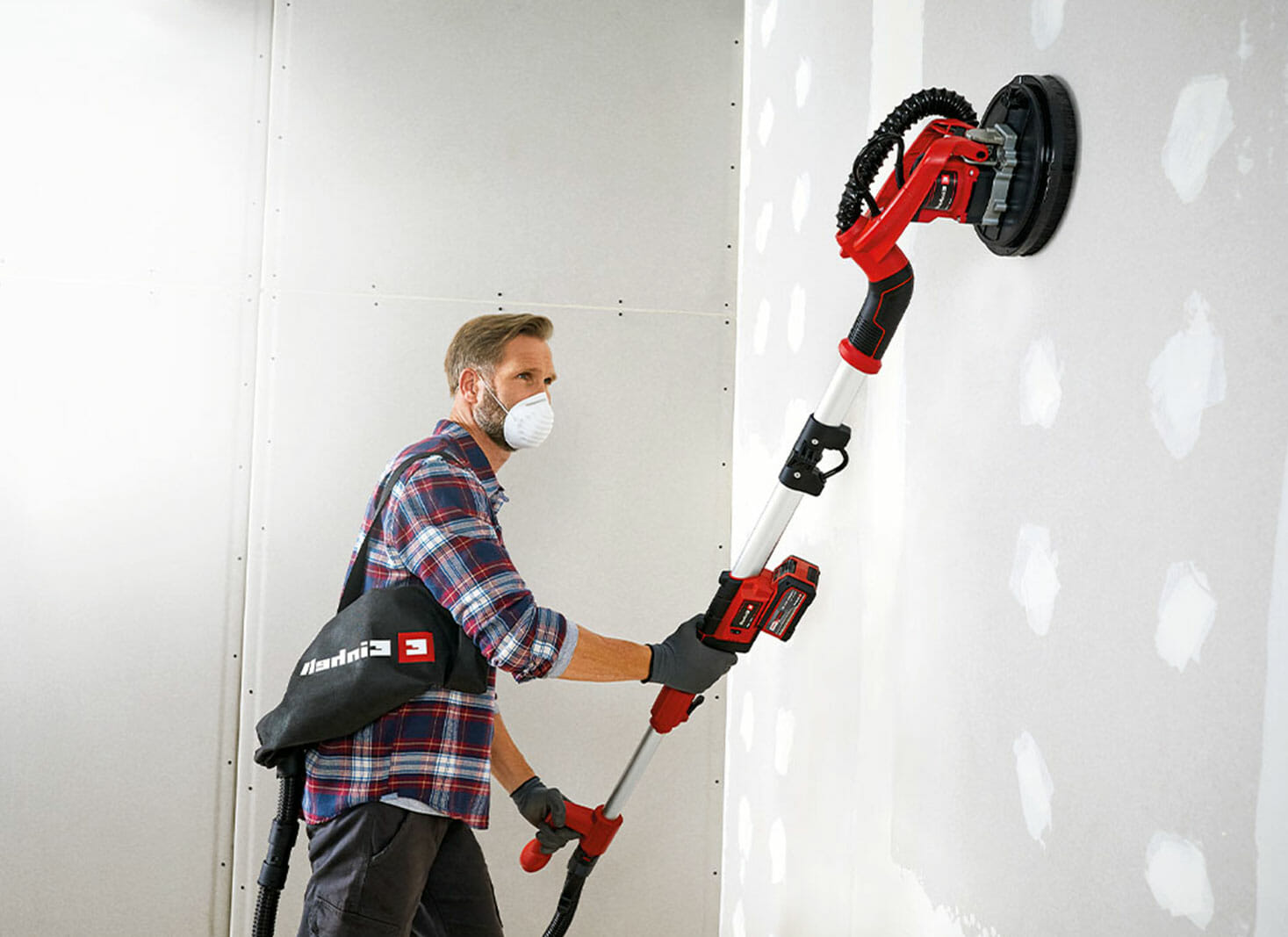
When sanding drywall, there are a few additional tips and considerations to keep in mind to ensure that the job is done safely and effectively.
Safety measures
Safety should always be a top priority when sanding drywall. Here are some safety measures to keep in mind:
- Wear protective gear such as goggles, a double-strap dust mask, and gloves to protect your eyes, lungs, and hands from dust and debris.
- Use plastic sheeting to cover floors and furniture to prevent dust from settling on them.
- Turn off electrical outlets in the room to avoid any accidents.
- Always use an orbital sander with caution, as it can cause damage to the drywall if used improperly.
- If you are working on a ladder, make sure it is stable and secure before climbing up.
DIY vs. professional sanding
Deciding whether to tackle a drywall sanding project yourself or to hire a professional can be a tough decision. Here are some things to consider:
- DIY sanding can save you money, but it requires time, effort, and the right tools.
- Professional sanding can be expensive, but it can save you time and ensure a high-quality finish.
- If you have experience with home improvement projects and feel confident in your abilities, DIY sanding may be a good option.
- If you are new to home improvement or have a large project, it may be best to hire a professional.
Maintaining your sanding tools
Proper maintenance of your sanding tools can help ensure that they last longer and work effectively. Here are some tips:
- Clean your sanding tools after each use to prevent dust and debris from building up.
- Store your sanding tools in a dry, cool place to prevent rust and damage.
- Replace sandpaper regularly to ensure that it is working effectively.
- Use the right grit sandpaper for the job to avoid damaging the drywall or creating unnecessary flaws.
By following these additional tips and considerations, you can ensure that your drywall sanding project is safe, effective, and produces a high-quality finish.
FAQ's
Yes, 120-grit sandpaper is suitable for drywall sanding. It is coarse enough to remove rough spots and bumps on the surface of the drywall but not too coarse that it will leave deep scratches or gouges.
However, it is recommended to use finer grit sandpaper for the final sanding to achieve a smooth and even surface.
The best sanding tool for drywall is a hand-held sanding block or a pole sander. Hand-held sanding blocks are great for small areas and corners, while pole sanders are ideal for sanding large areas such as walls and ceilings.
It is important to choose a sanding tool that is comfortable to hold and easy to maneuver.
To sand drywall without creating dust, it is recommended to use a sanding sponge or wet sanding technique. A sanding sponge is designed to trap dust and debris as you sand, reducing the amount of airborne dust.
Wet sanding involves using a damp sponge or cloth to sand the drywall, which also helps to minimize dust.
The best way to sand drywall quickly is to use a sanding tool with a high sanding speed. Electric sanders such as orbital sanders or belt sanders are great for sanding large areas quickly.
However, it is important to be careful when using these tools to avoid damaging the drywall surface.
Some recommended sanding products for drywall include sanding sponges, sanding screens, and sandpaper. Sanding sponges are great for small areas and corners, while sanding screens are ideal for sanding large areas.
Sandpaper can be used for both hand sanding and machine sanding. It is important to choose sanding products that are appropriate for the specific job and surface.







